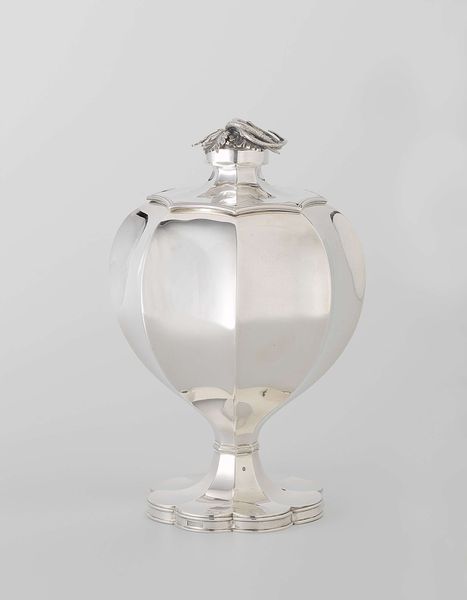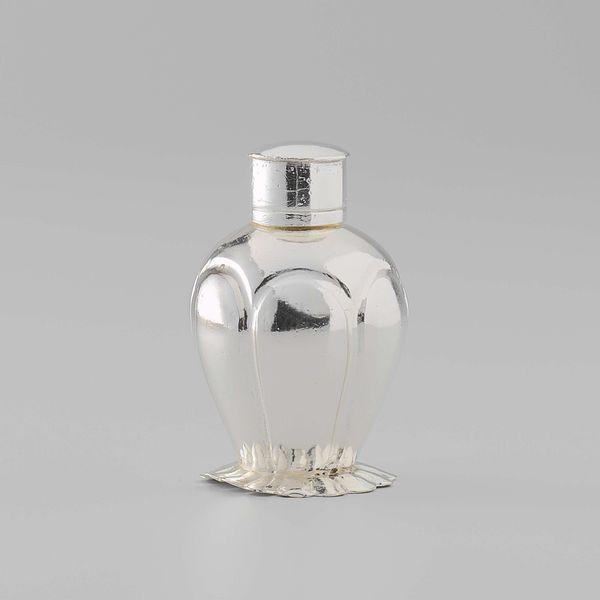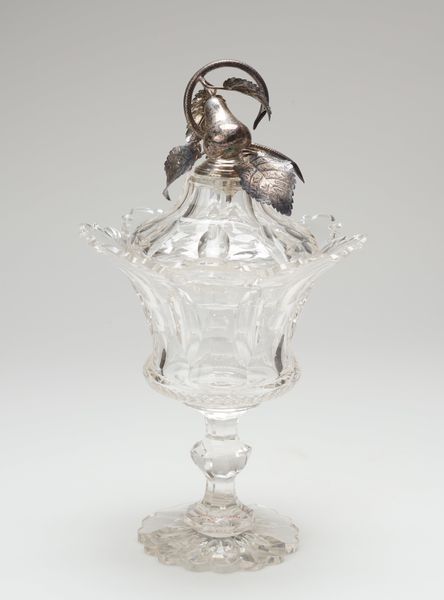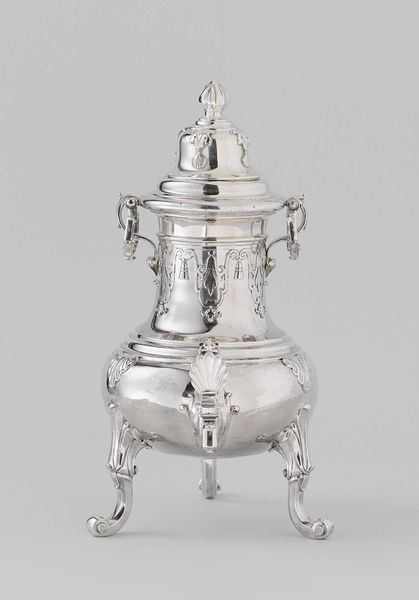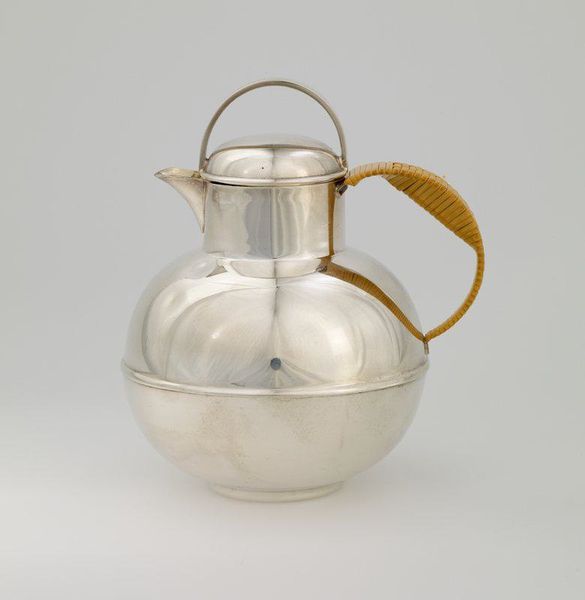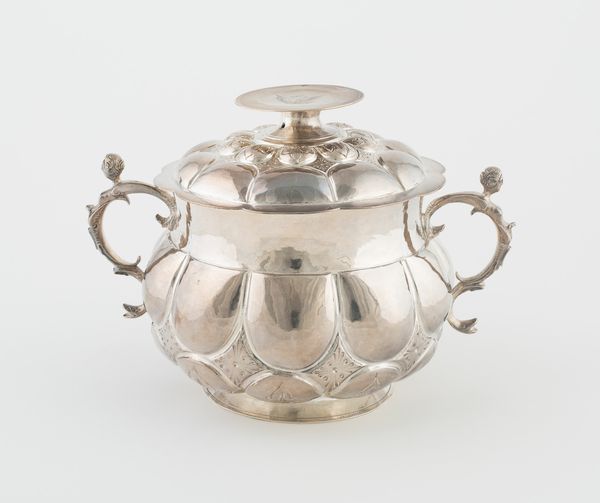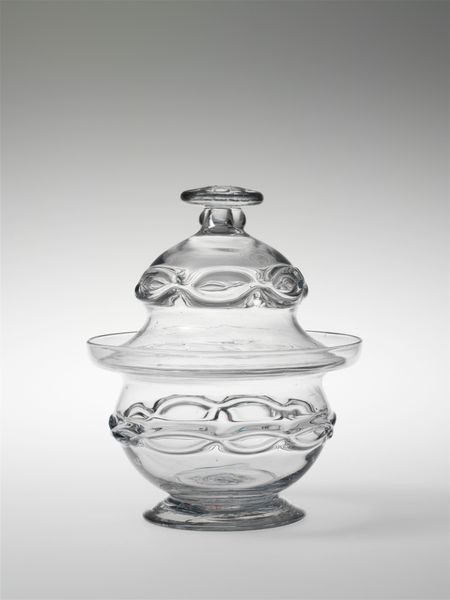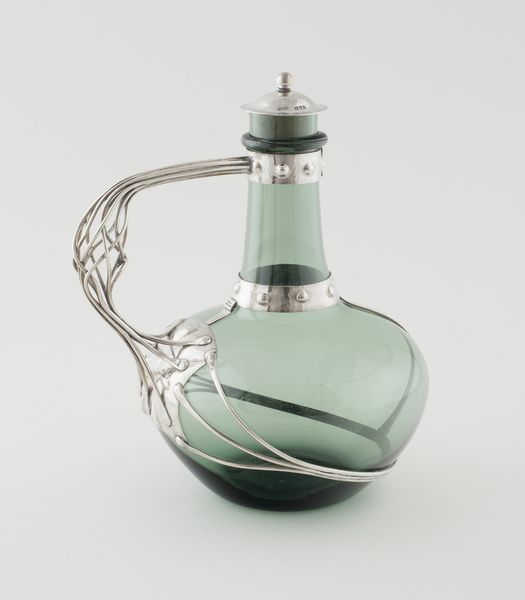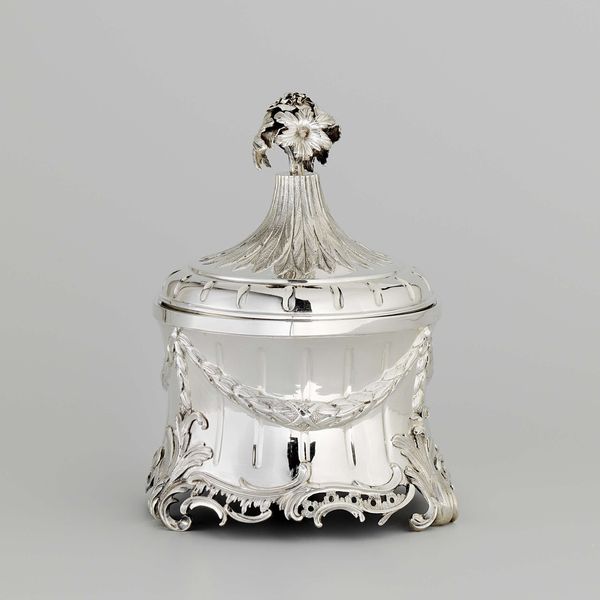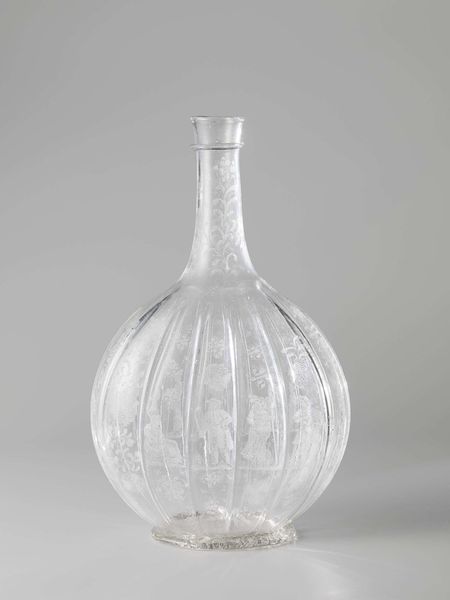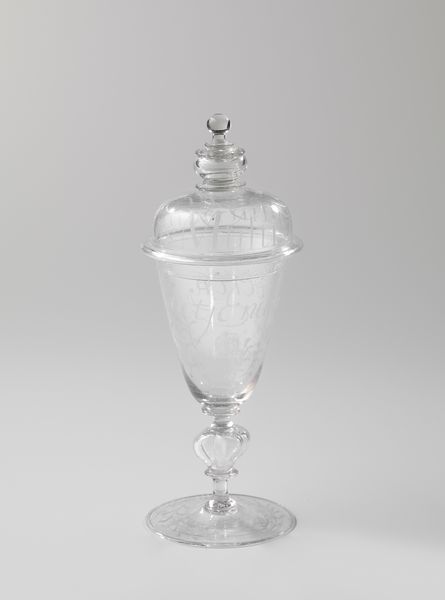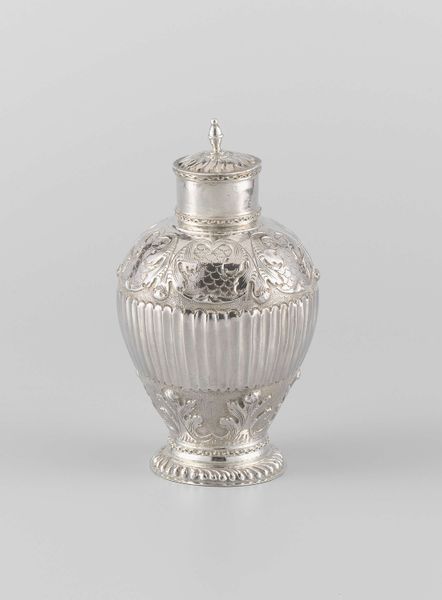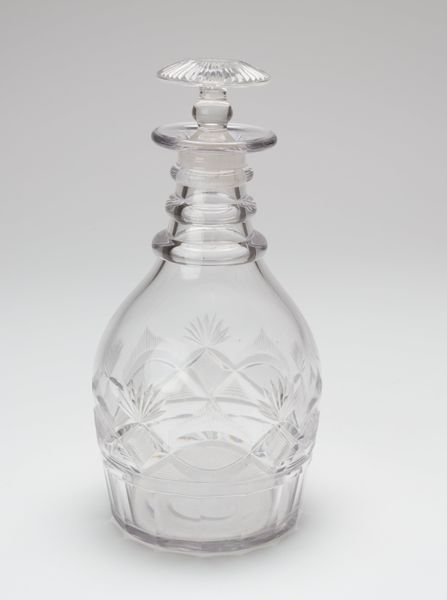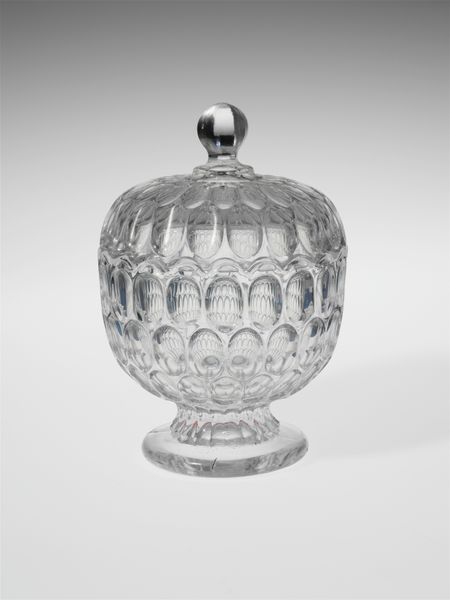
silver, metal, sculpture
#
silver
#
metal
#
sculpture
#
romanticism
#
decorative-art
Dimensions: height 25.2 cm, diameter 15.5 cm, weight 1081 gr
Copyright: Rijks Museum: Open Domain
Editor: This is a "Pair of chestnut vases," crafted in 1841 by Fa. As. Bonebakker en Zoon. The artwork consists of silver, metal, and it takes the form of sculpture. The pair is currently housed at the Rijksmuseum. I find the overall shape quite intriguing. How would you interpret these pieces? Curator: I see these vases as embodying the complexities of 19th-century European identity. Crafted during the rise of industrialization and colonialism, the idealized natural form – a chestnut, a symbol of abundance and domesticity – is rendered in gleaming silver, a material obtained through exploitative labor practices. The vases' presence in a museum prompts us to question the socio-economic structures and power dynamics of the era. Editor: So you are suggesting they aren't simply decorative objects? Curator: Exactly! Think about the intended audience. Who would have possessed these? Wealthy elite, most likely, who directly benefited from these exploitative systems. The aesthetic beauty masks an uncomfortable truth. Can we truly appreciate the craftsmanship without acknowledging its tainted origins? The use of silver is not a neutral act. Editor: That really makes me reconsider how I initially saw them. The beauty becomes almost... problematic. Curator: Precisely. Art from this period requires constant questioning. By critically examining the context, we confront the legacy of colonialism and capitalism embedded within seemingly innocuous objects. Consider the display of the artwork in a museum that should be committed to equity, how do these vases reify that commitment? Editor: It’s unsettling but so vital to recognize these layers of meaning. Thanks to your input, my understanding of the chestnut vases moved towards a global view and how our society reflects that period.
Comments
No comments
Be the first to comment and join the conversation on the ultimate creative platform.
